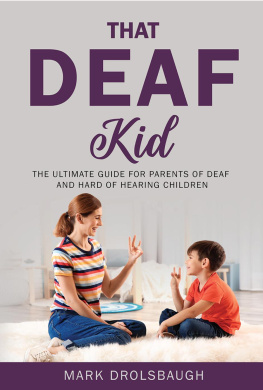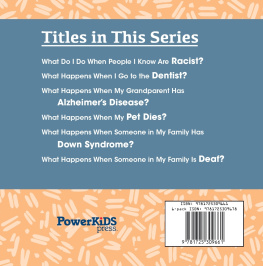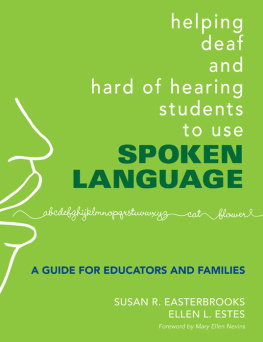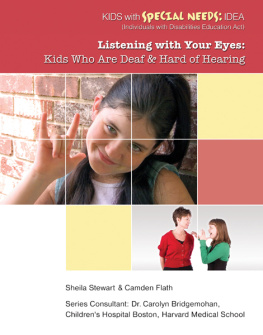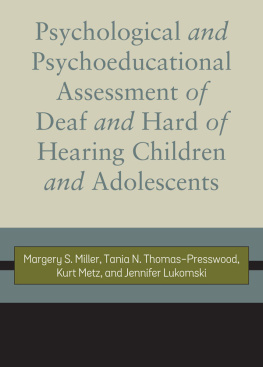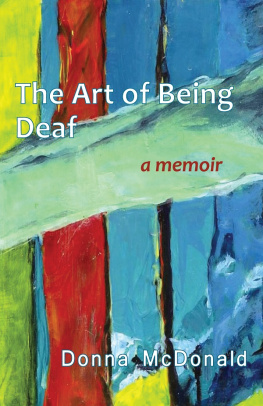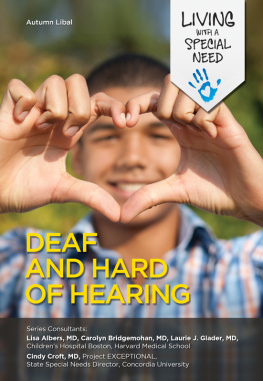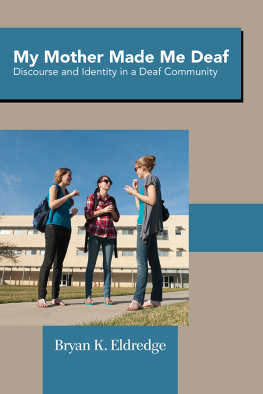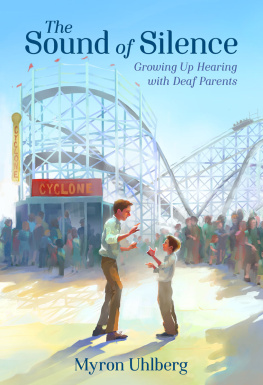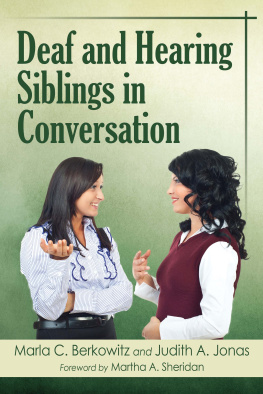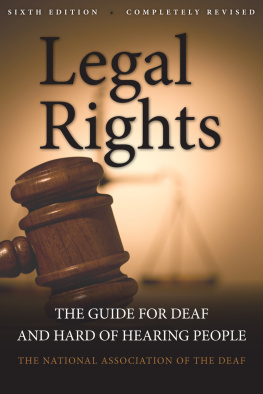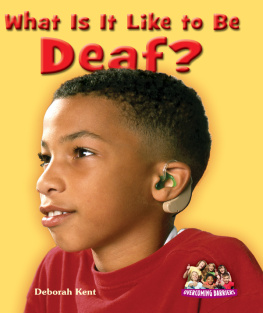That Deaf Kid: The Ultimate Guide for Parents of Deaf and Hard of Hearing Children
Mark Drolsbaugh
Published by Handwave Publications, 2022.
While every precaution has been taken in the preparation of this book, the publisher assumes no responsibility for errors or omissions, or for damages resulting from the use of the information contained herein.
THAT DEAF KID: THE ULTIMATE GUIDE FOR PARENTS OF DEAF AND HARD OF HEARING CHILDREN
First edition. February 8, 2022.
Copyright 2022 Mark Drolsbaugh.
Written by Mark Drolsbaugh.
10 9 8 7 6 5 4 3 2 1
To That Deaf Kid. Each and every one of you.
T hat Deaf Kid: The Ultimate Guide for Parents of Deaf and Hard of Hearing Children is a compilation of presentation material based on the book Madness in the Mainstream.
There were requests to do presentations all over the United States and Canada after Madness in the Mainstream was released. I had a lot of fun with that.
Later, a colleague pointed out that the presentation was as strong, if not stronger, than the actual book. I was flattered, but the realization hit me: If you missed the presentation, then train gone .
The presentation is now in print. Problem solved.
In my first book, Deaf Again , I advocated on behalf of myself as a deaf person. In Madness in the Mainstream , I advocated on behalf of my deaf son. I also have a daughter who later followed the same path. Everything I've written applies to her, too.
When you become a parent, you find a gear you didn't know you had. I found myself writing things that rocked the boat in a way I'd never done before. I want other parents to have this information. A lot of it is kept from them in the early going when they raise deaf and hard of hearing children.
Just like Madness in the Mainstream, you'll find a healthy balance of entertaining anecdotes, groundbreaking research, and some oh my god I can't believe he said that . You'll laugh, and you'll learn. You'll see the behind-the-scenes impact mainstreaming has on deaf and hard of hearing students. You'll see how these issues can fly under the radar.
More important, you'll see what can be done about it.
Enjoy the madness.
Out of the Frying Pan and Into the Fire
I remember what it was like to attend public school in the early 1970s. I was an elementary school student with a progressive sensorineural hearing loss. It was barely noticeable in kindergarten, but I remember becoming increasingly frustrated in first grade.
I also remember there was a special education teacher for those of us who needed extra attention.
Our special education teacher was a film projector.
That's right. If you had any kind of special needs, you could find yourself in a back room with Mr. Projector.
Of course, this was not acceptable. The Education for All Handicapped Children Act, also known as Public Law 94-142, was enacted in 1975. It would later be revised and renamed as the Individuals with Disabilities Education Act (IDEA).
IDEA meant well. It guarantees a free appropriate public education for students with disabilities. A back room with a film projector is obviously not an appropriate education. Thanks to IDEA, many students were taken out of the back room and placed in regular classrooms.
This was a step in the right direction. But if there was one flaw with IDEA, especially when it comes to deaf and hard of hearing children, it was an oversight with LRE.
And what does LRE mean?
Legislators Ruined Everything .
At least they did for the deaf kids, even if it wasn't intentional.
We're talking about least restrictive environment, which was meant to open doors for all students with disabilities.
Here's the problem: The general education setting is considered ideal, while a classroom with other people you can actually relate to is considered restrictive.
In other words, where are the other deaf kids? Peers and role models, you know?
I wouldn't want to be the only boy in an all-girls school. I wouldn't want to be the only Black child in an all-white school. I wouldn't want to be the only Jewish kid in an all-Catholic school. You get my drift. Being The Only One can be uncomfortable. And yet this is what least restrictive environment strives for if you're a deaf child.
If you can fit in with the hearing kids, congratulations! You're practically normal!
Least restrictive environment is supposed to focus on program more than place. Yet somehow, its interpretation can put deaf kids in the wrong place. A deaf kid in the front row of a large classroom of hearing kids can feel just as isolated as the deaf kid in the back room with Mr. Projector.
The Mona Lisa of All IEPs
D uring my first year as a guidance counselor at a school for the deaf, my supervisor wanted me to learn how to write an Individualized Education Program. Seeing how I was the new kid on the block, he gave me one of the easiest IEP assignments a counselor could ask for.
I had to write a report on Jeffrey, one of our brightest students. I knew right away this was going to be a piece of cake.
Jeffrey was a brilliant student. Straight A's. He was immensely popular amongst his peers and had a fantastic sense of humor. There were no significant issues of concern as far as I could tell. In fact, this kid's reading and writing skills were way off the charts compared to most deaf students his age.
There's a reason for that. Jeffrey comes from a family that has communicated with him in sign language from birth. He had zero delays in language acquisition.
A disclaimer to all parents reading this: Not every deaf or hard of hearing person out there knows or uses sign language. There are multiple ways a deaf or hard of hearing student can learn, and we'll address that in a later chapter. What I'm saying here is that language acquisition at an early age is the number one key to success. The brain does not care how language is acquired. It could be through sign language, speaking, or communicating in Morse code via armpit farts. Again, the brain doesn't care. It just wants language. Craves it. Language is brain food. Sign language just happens to be the most easily accessible means at the earliest possible age. Jeffrey was living proof of this.

